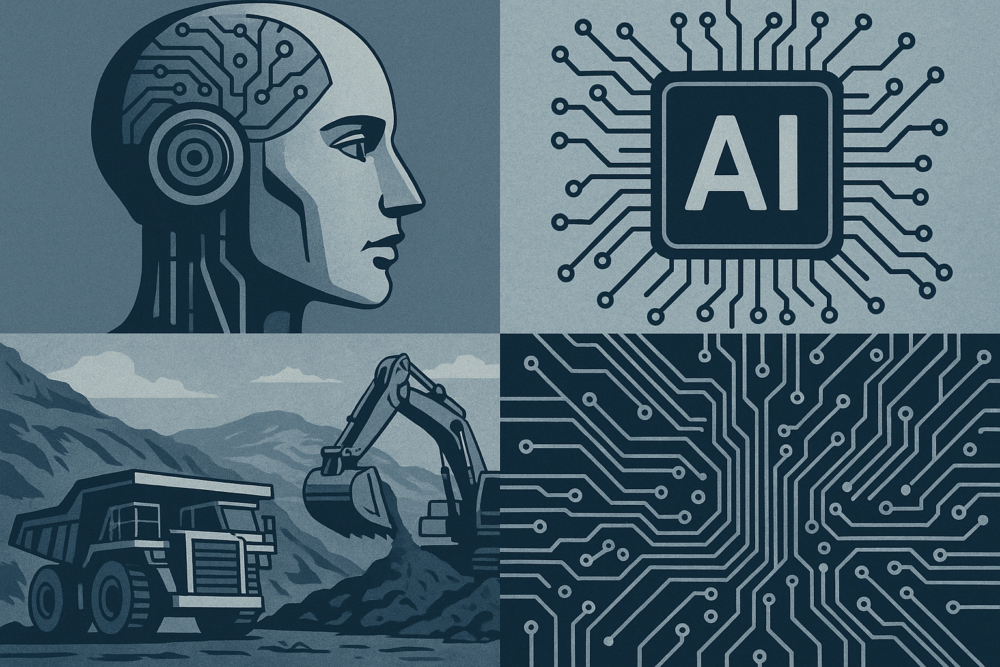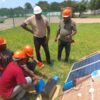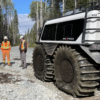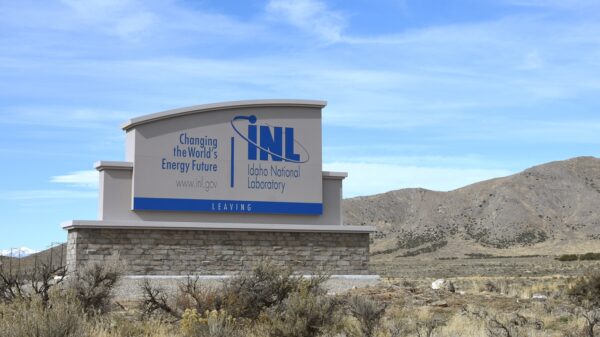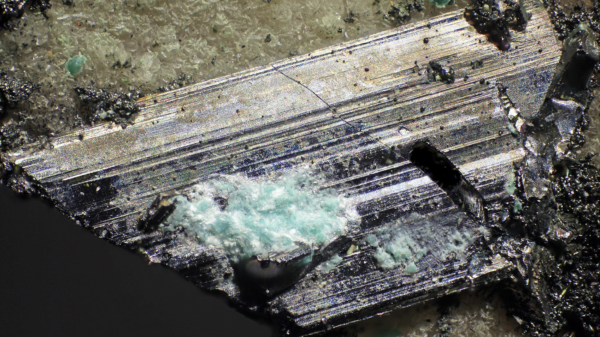Depending on who you ask, artificial intelligence (AI) is either humanity’s saviour or its downfall. Some see it as the catalyst for our destruction, others as the gateway to a better world. There’s rarely middle ground and even less room for nuanced debate.
That’s why most arguments about AI miss the point.
AI is a tool. Like any tool, it works well in some areas and poorly in others. It excels at processing large datasets, automating routine tasks, and uncovering patterns humans might miss. It also scales those tasks quickly, freeing up time and resources.
Conversely, artificial intelligence struggles with true human creativity and emotional nuance. It can’t invent meaning. But it doesn’t need to. Its strengths lie in logic, speed, and repetition, which are traits well suited to technical industries like mining.
Therefore, many mining and exploration companies are now using AI to improve efficiency, reduce costs, and accelerate discovery. They are training models to scan geological data, identify prospective zones, and refine targeting before a single drill touches ground.
Furthermore, these systems help with predictive maintenance, fleet management, and even environmental monitoring.
Here are a few companies leading that charge.
Rio Tinto
Rio Tinto Group (NYSE: RIO) operates some of the world’s most advanced mining sites, extracting iron ore, copper, aluminum, diamonds, and uranium. Their flagship iron ore operations in Western Australia’s Pilbara region serve as a testing ground for AI and automation technologies. At these sites, Rio Tinto uses AI driven autonomous haul trucks and drills. These machines connect to a vast network of sensors and real time data streams. The AI systems monitor equipment health, optimize fleet movements, and adjust mining operations dynamically. This approach maximizes efficiency and reduces fuel consumption.
One key technology is Rio Tinto’s “Mine of the Future” program. It uses machine learning algorithms to analyze geological and operational data. Therefore, the company improves ore grade prediction and blending strategies. Rio Tinto also employs AI powered computer vision for ore sorting and mineral identification. This technology increases the accuracy of separating valuable material from waste rock. Additionally, predictive maintenance models forecast equipment failures before they occur. This allows proactive servicing and minimizes costly downtime.
Furthermore, Rio Tinto applies AI at its copper mines in Chile and the United States, including the Kennecott mine in Utah. The company uses AI to enhance processing plant efficiency and monitor environmental factors. Their AI adoption supports sustainability goals by optimizing energy use and reducing environmental impacts. Consequently, Rio Tinto leads the mining industry in integrating smart technology into large scale operations.
Read more: Equinox Gold amends production and guidance to include Calibre’s offerings
Read more: Calibre Mining supports future mining industry workers at Newfoundland science fair
Vizsla Copper
Last week, Vizsla Copper Corp. (CVE: VCU) partnered with VRIFY Technology Inc. to use DORA, the world’s only AI assisted Mineral Discovery Platform. This platform will enhance and expand Vizsla’s datasets and accelerate target definition across its copper gold projects in British Columbia.
VRIFY applies advanced AI and proprietary algorithms to produce a VRIFY Prospectivity Score (VPS). This score ranks and prioritizes areas with potential copper and gold mineralization. Therefore, DORA helps Vizsla focus exploration on high value targets. Other exploration companies have used DORA to identify priority areas, later validated by drilling.
Vizsla Copper plans an aggressive 2025 exploration season, already underway with fieldwork. Craig Parry, Chairman and CEO, said the company views DORA as a cutting edge tool to guide its efforts. Additionally, with a strong treasury, Vizsla expects steady news flow while advancing its land package using geophysics and drilling.
DORA offers a web based platform allowing Vizsla’s technical team to generate and refine their own predictive models. This hands on approach lets geoscientists explore more effectively and rapidly. Furthermore, Vizsla will validate artificial intelligence outputs through systematic ground truthing, including geochemical and geophysical surveys and drilling.
VRIFY aims to remove the black box nature of AI in mineral exploration. Their DORA platform puts AI power into the hands of geoscientists to uncover hidden mineral deposits. Backed by a $12.5 million Series B funding round, VRIFY serves hundreds of clients. These include Southern Cross Gold and RUA GOLD, which have benefited from new discoveries and increased valuations. VRIFY combines advanced AI with the industry’s largest proprietary dataset, accelerating mineral exploration worldwide.
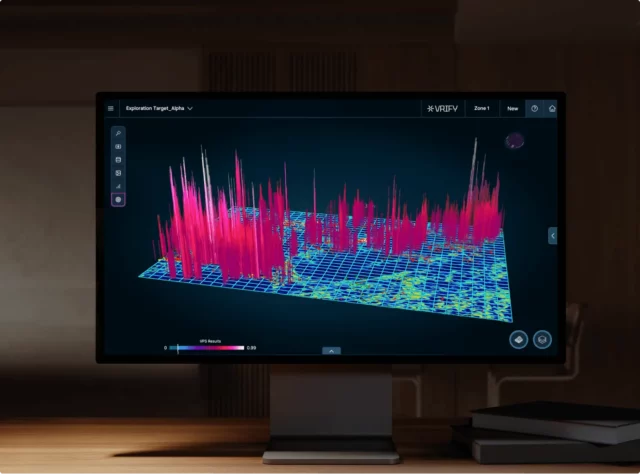
VRIFY AI-Assisted Mineral Discovery Platform. Image via VRIFY.
Equinox Gold
Equinox Gold Corp (TSE: EQX) (NYSEAMERICAN: EQX) (FRA: 1LRC) and Calibre Mining Corp (TSE: CXB) (OTCMKTS: CXBMF) (FRA: WCLA) are set to merge in June 2025, creating one of the largest gold producers in Canada. Both companies bring strong AI capabilities to the table. Equinox Gold has integrated AI into its mining operations to improve efficiency, safety, and production. It uses autonomous haul trucks and drills powered by AI to optimize ore movement and minimize waste. Additionally, AI driven predictive maintenance systems monitor equipment in real time, helping to prevent breakdowns and extend machinery life.
Equinox also applies machine learning models to exploration data to improve ore body targeting. These tools analyze massive datasets and geological inputs, leading to more accurate drilling and better resource estimates. Furthermore, AI supports energy optimization and environmental monitoring across Equinox’s sites, contributing to its sustainability goals.
Calibre Mining has embraced AI as well, particularly through its partnership with VRIFY. The company used VRIFY’s DORA platform at its Valentine Lake project in Newfoundland to generate 3D models and prioritize mineral targets. This AI assisted approach led to the identification of high conviction drill zones and improved targeting precision. Calibre plans to continue using VRIFY post merger across its expanded portfolio of assets.
Together, Equinox and Calibre will build on their shared commitment to innovation. Equinox’s investment in automation and Calibre’s success with AI driven exploration will create a vertically integrated, tech forward mining company. The merger will also accelerate AI adoption across a broader range of projects, enhancing operational efficiency and boosting long term production potential.
Read more: Calibre Mining reports solid Q1 results; receives court approval for Equinox Gold merger
Read more: Calibre securityholders give assent for Equinox Gold merger
Windfall Geotek
Windfall Geotek Inc (CNSX: WIN) (OTCMKTS: WINKF), a Vancouver-based artificial intelligence company, has carved a niche in the mining sector by combining geospatial data analytics with drone technology. The company’s proprietary CARDS (Computer Aided Resource Detection System) platform uses machine learning to analyze geological, geochemical, and geophysical data. It identifies high-probability exploration targets that help mining companies reduce costs and improve drilling success rates.
Windfall has partnered with Draganfly Inc (NASDAQ: DPRO) (NASDAQ: CNSX), a leading drone manufacturer, to enhance its aerial data collection capabilities. Draganfly’s drones, equipped with advanced sensors, gather high-resolution geophysical and geochemical data over large tracts of land. Windfall’s artificial intelligence then processes this data, along with historical exploration records, to highlight areas with strong mineral potential. This integrated approach allows for faster, more accurate exploration.
Windfall has collaborated with several mining companies including Canada Nickel Company (CVE: CNC), Noble Mineral Exploration (CVE: NOB), BTU Metals (CVE: BTU), and Laurentian Goldfields. These partnerships have applied CARDS to projects targeting gold, nickel, copper, and other critical minerals. Additionally, the company has used its technology to support battery metal exploration, especially in regions like northern Ontario and Quebec.
Furthermore, Windfall’s work is not limited to mining. The company has adapted its AI for landmine detection in humanitarian efforts, showcasing the versatility of its technology. Conversely, few competitors offer such a multi-sector, data-driven approach.
By merging AI with real-time drone data, Windfall Geotek delivers a powerful exploration toolset. In addition, the company’s ongoing collaboration with Draganfly continues to unlock new possibilities in remote and underexplored areas. As mineral exploration demands greater efficiency and lower environmental impact, Windfall stands out as a forward-thinking partner in the evolving mining landscape.
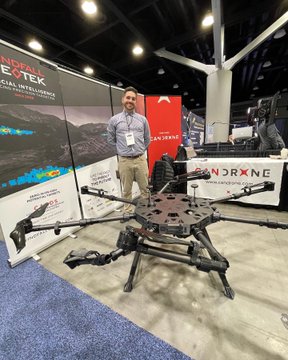
A windfall geotek drone from PDAC 2022. Image via Joseph Morton.
Critical minerals
Critical minerals like antimony are essential for technologies ranging from semiconductors and flame retardants to advanced batteries and military applications. Yet, global supply chains remain fragile, with heavy dependence on a few dominant producers—most notably China. This concentration creates risks tied to trade restrictions, conflict, and resource nationalism, leaving countries like the United States and Canada searching for ways to secure domestic supplies.
Artificial intelligence is emerging as a key tool in addressing these risks. AI-driven exploration techniques use machine learning to analyze geological, geophysical, and geochemical data, identifying promising mineral targets more efficiently than traditional methods. This helps companies reduce the time and cost involved in discovering viable deposits while minimizing environmental disruption.
Nova Minerals (NASDAQ: NVA), for instance, is applying AI at its Stibium Project in Alaska to locate high-grade antimony zones. In addition, Military Metals Corp. (CNSX: MILI) is reviving past-producing antimony projects across North America and Europe and could significantly improve target definition through AI integration. Similarly, United States Antimony Corporation (NYSE AMERICAN: UAMY) stands to benefit from predictive analytics to improve mine planning and recovery rates.
Beyond antimony, AI also shows promise in accelerating exploration for other critical minerals such as rare earth elements. These are vital to electric vehicle motors, wind turbines, and high-performance electronics. Companies exploring rare earths could apply the same AI techniques to parse legacy datasets, identify overlooked anomalies, and streamline drilling.
Conversely, those who fail to adopt these technologies risk falling behind in a resource market increasingly shaped by speed, precision, and geopolitical urgency. AI is not just a tool—it is a strategic advantage in securing future supplies of critical minerals.
.
Calibre Mining is a sponsor of Mugglehead news coverage
.

